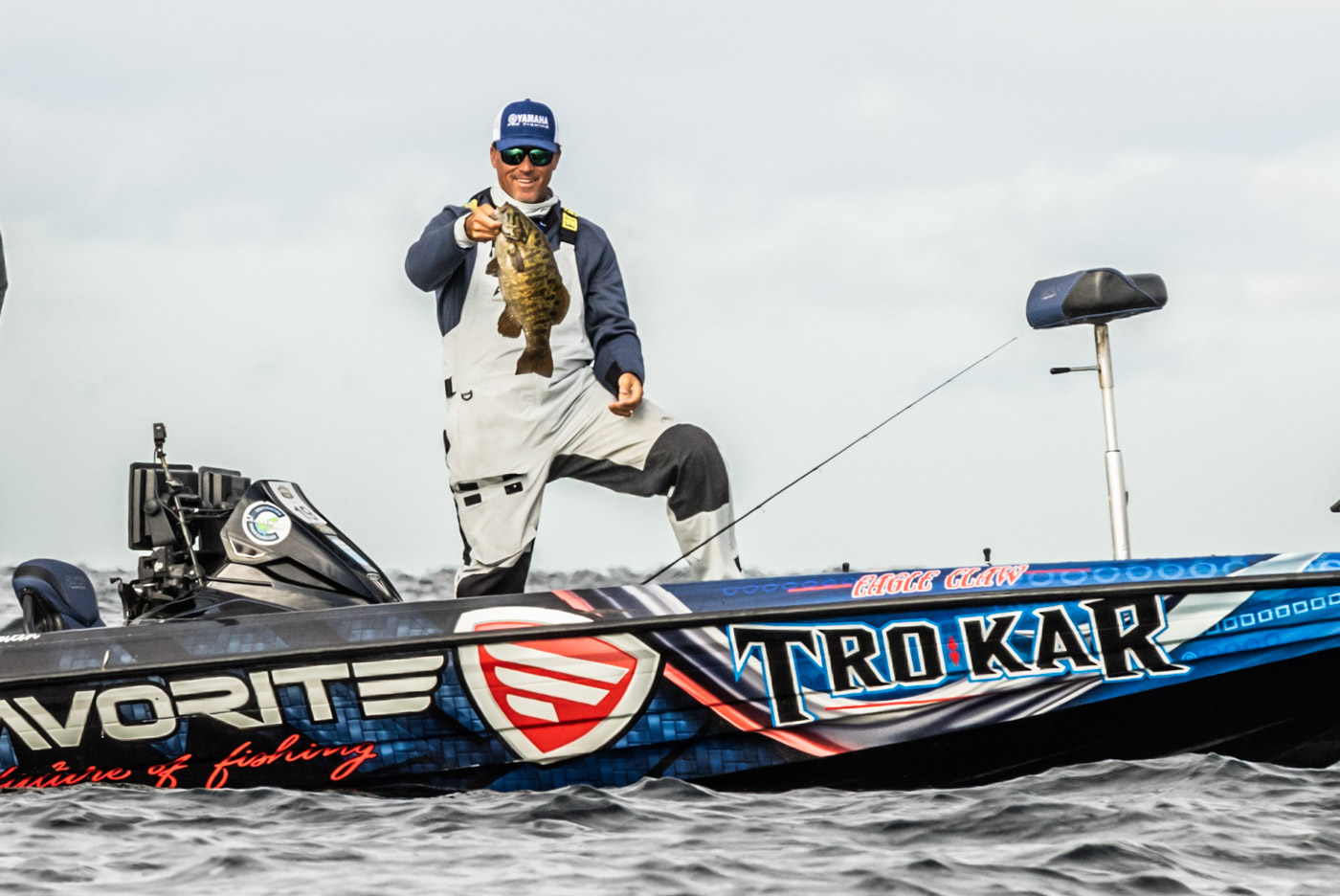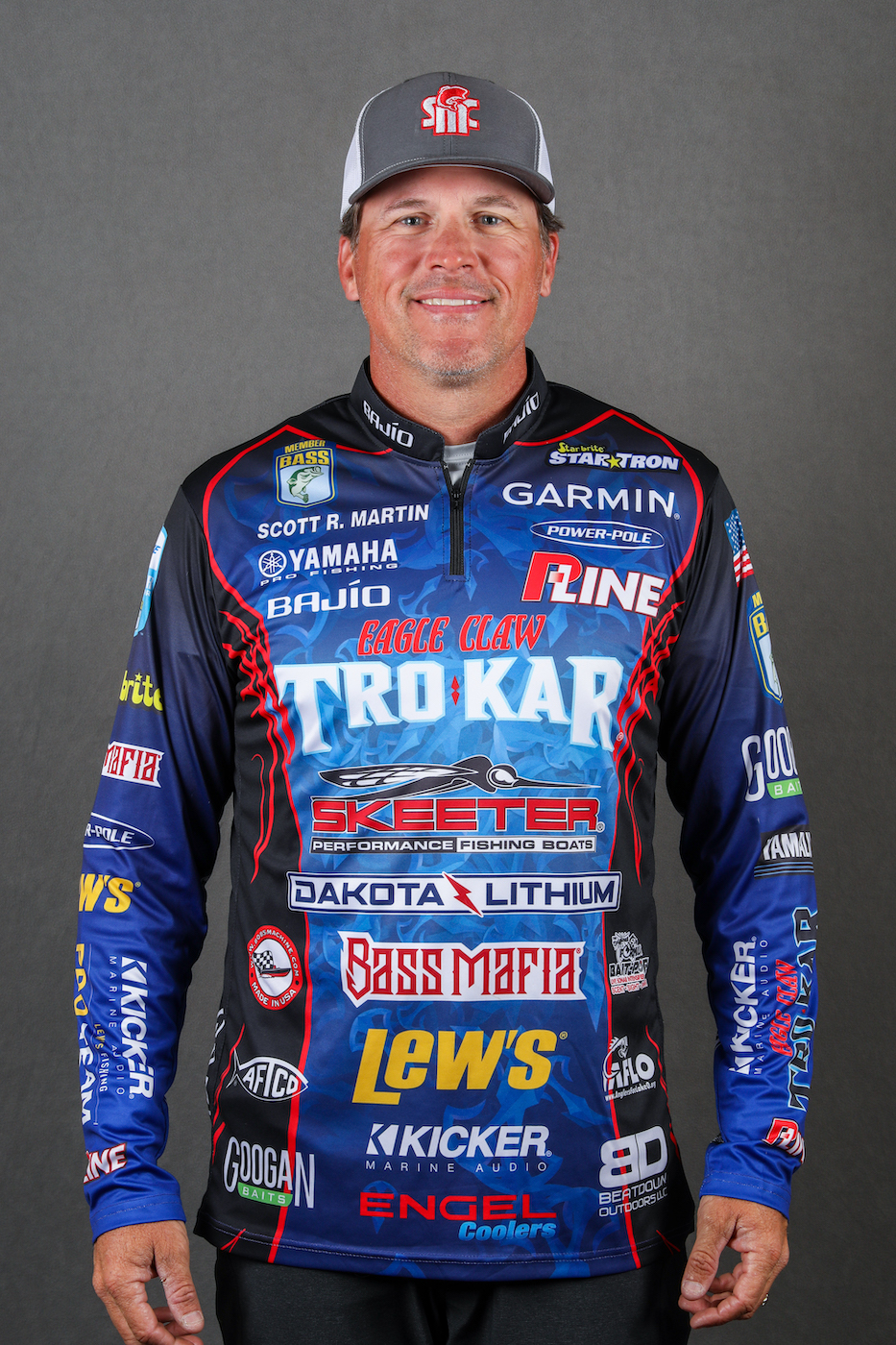
Wrapping up the season with a Top 10 at the St. Lawrence River felt good. I kicked off the year with a top 30 at Lake Okeechobee, so I started strong and ended strong.
Doing well at the St. Lawrence was especially rewarding because, in the past, this fishery has been challenging for me. I wasn’t comfortable running into Lake Ontario and just didn’t understand enough about the way the fish set up to do well.
But I’ve learned to be comfortable with this fishery by just getting out there and learning it. This time, I ran a long way into the lake all four days — even Day 1 when it was so rough.
I didn’t hide behind an island, I was mostly out in the open. A lot of that is my equipment. My Skeeter and Yamaha handled those waves incredibly, and the fishability of this boat and motor unlocked a whole other level of confidence for me.
The reward for learning these waters is the opportunity to experience the nation’s greatest smallmouth fishery. I remember hearing stories from my father, back when he fished the Bassmasters in the 70s and 80s, how smallmouth weren’t even an option back then.
A big bag of smallmouth back then was 15 to 16 pounds, and the largemouth dominated all of the tournaments. Since the introduction of zebra mussels and gobies, it has progressed into an incredible fishery. The number of 3- and 4-pound fish is just amazing.
On top of that, the size and the shape of these St. Lawrence and Lake Ontario fish is like nothing you’ll find anywhere else. I caught several gobies while I was fishing, and they were all 4 to 5 inches long. They’re big and round, like little protein bars.
That’s why the smallmouth have gotten so big, and they’re all square. They’re eating so much protein that they’re just a different shape than smallmouth in places that don’t have gobies.
It reminds me of the Kodiak grizzly bear. That’s basically the same as the brown bear of the Rocky Mountains, but the ones on Alaska’s Kodiak Island feed on protein-rich salmon, so they grow a lot bigger than the ones that mostly feed on berries, plants and smaller animals.
Those Kodiak grizzlies reach enormous sizes because of what they eat. That’s what those Great Lakes and St. Lawrence smallmouth have turned into — the Kodiak smallmouth of the fishery.
One thing I’ve noticed is that these goby eaters tend to roam less than on fisheries like Lake Champlain, where the smallmouth spend most of their time suspending around schools of perch and alewives. By comparison, those Great Lakes and St. Lawrence smallmouth are almost always on the bottom focused on areas where the gobies are thick.
I have to say that learning how to catch these big “Kodiak smallmouth” has been a blast. It was great to end the season on a high note and give myself a boost of confidence and momentum to carry into next year.
One thing that I’ve really come to appreciate is just how hard it is to compete and win at the Elite level. These guys are incredible fishermen, and they’ll figure out any fishery, so you can’t afford to slip up.
My goals for the 2024 season will remain the same as they were this year — to win an Elite event and to qualify for the Bassmaster Classic. I think the biggest difference will be how I go about that.
This year, I took some risks. I went for the win and let the points fall where they would. To be honest, I’ll probably have close to the same mindset going into next year, but I’ll take unnecessary risks out of the equation.
I’ll be a little more conscious of the risk factor at some of these events. You can’t have a bomb and expect to stay relevant.
I look forward to getting out there again. I have a lot of great fishing ahead of me, and I’m ready to get after it.





